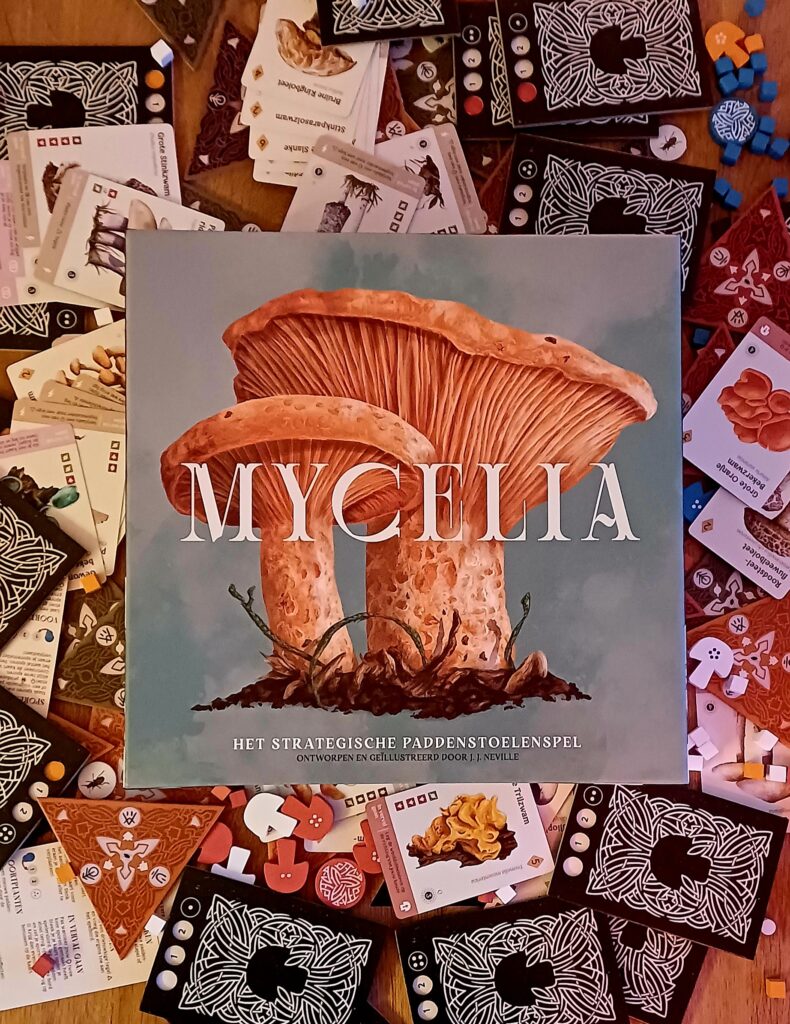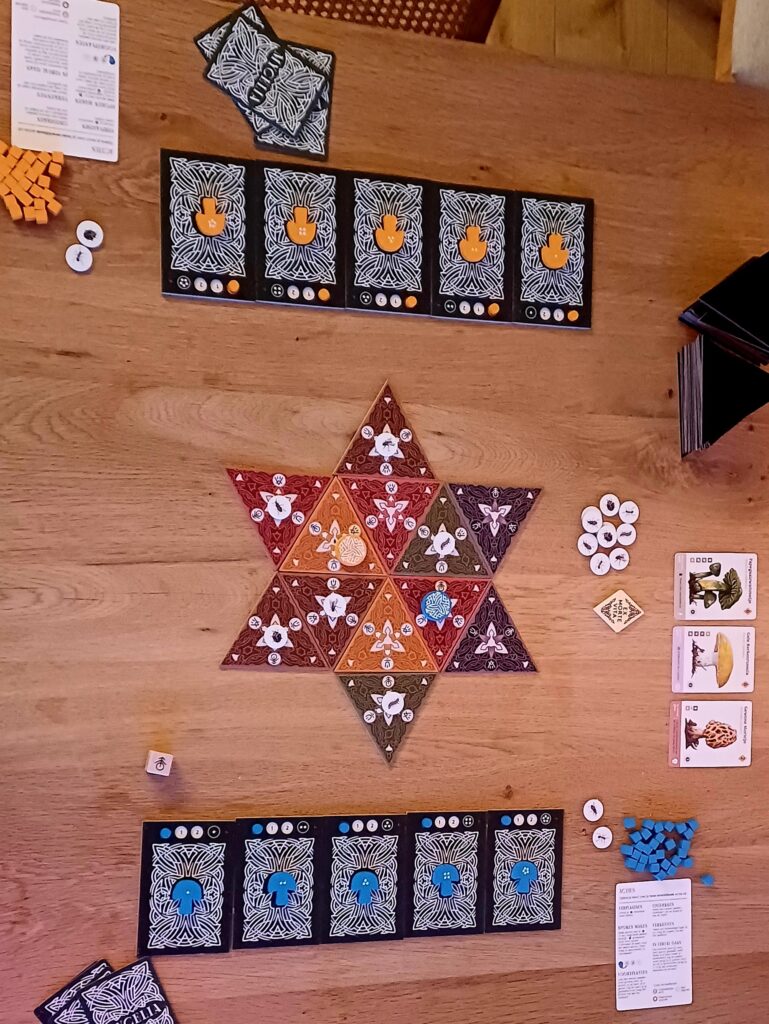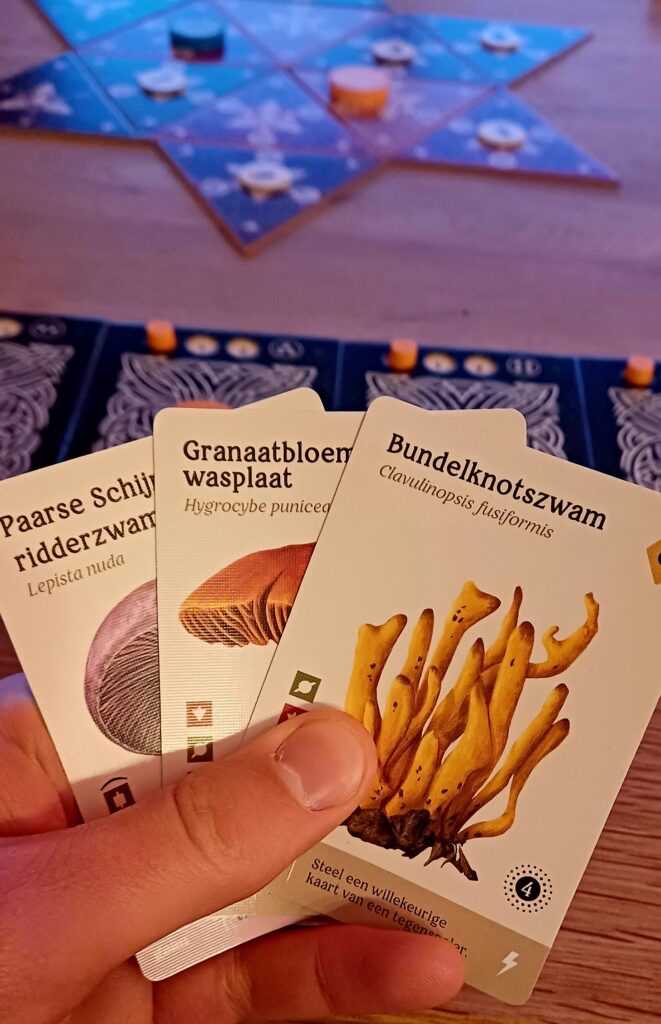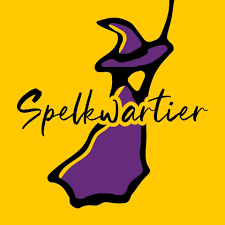Mycelia is a game that fits into the category of games with beautiful artwork. All kinds of mushrooms take centre stage and are depicted on various mushroom cards. There are 69 of them in the game (a dubious number?), with truly wonderful names like the blood-drop stinging mushroom or the steak mushroom. There are also less exotic names, where the discoverer has not been particularly creative in coming up with the right name and just named what he or she saw: large parasol mushroom, pointy bald cap and large orange cup mushroom. This is not always very clear, by the way, because if you see the grey slender amanite and the grey amanite in front of you, I wouldn’t be able to tell immediately which mushroom belongs to which name. Interestingly, there are also mushroom species that are apparently so common that this is even reflected in the name: common tuberous parasol fungus, common velvet leg and common fop fungus. Last but not least, one mushroom species was so indefinable by appearance that its discoverer ate it (and liked it!), hence the name ’tasty milk fungus’. Anyway, lots to say about all the mushroom species, but for the most part they look very cool and the theme works well.

How does the preparation of the game go? Each player lays five player boards in front of them in a row and places the spore counter in the first free space. Then, in the middle of the table, make a star of triangular tiles on which to play. If a tile has an insect on it, an insect token is placed on it. Next, distribute three mushroom cards to each player and put the rest on the table as a face-down pile, with three face-up cards next to it. Furthermore, each player gets five mushrooms (which are placed on the player boards), thirty spores and one mother mushroom. The mother mushroom must be placed on a tile located in the centre of the star. If the player chooses a tile with an insect token, that player gets that insect token immediately.
How the game works. Each turn, a player performs two different actions, choosing from six actions:
- Move
The mother mushroom is moved a maximum of two tiles. This can never be done via a tile on which another player’s mother mushroom lies, but it can be done if another player’s full-grown mushroom lies on a tile. A player can even end up on another player’s full-grown mushroom.
- Explore
A tile is taken from the covered pile and placed somewhere adjacent.
- Making tracks
This action blows spores across the playing field. A mother mushroom always blows two tiles far, but there are certain mushrooms (cards) that can blow further. At the beginning of the action, you have to decide which mushroom to use to blow tracks with, i.e. the mother mushroom or a full-grown mushroom. The wind die then determines the direction of the track. There will always be a track on the tile from which you are drilling and on the tile next to it in the specific wind direction. If you still have tracks left, you can choose on which adjacent tiles you want to leave tracks. The wind direction determines on which tiles traces can remain. Note: If another player’s mother mushroom lies on your track, then the track is accessible to that player and no longer to you. If other tracks are also cut off from your network as a result, you can’t access them either.
- Reproduce
If you want to grow a mushroom, choose the action ‘reproduce’. The left side of a mushroom card shows what is needed for the mushroom to reproduce. The colour cubes on the card refer to the corresponding tiles, which then need to have spores on them. A black tile acts as a joker. A full-grown mushroom lands on the playing field. Each full-grown mushroom can only release spores twice. This can be tracked with the spore counters on the player boards.
- Going into decline
If a mushroom goes into decline, the mushroom card is slid under the player board and the fully grown mushroom is removed from the playing field. The special action on the card is also activated. This can include an immediate action or a game or mushroom upgrade.
- Discover
One of the face-up mushroom cards or one card from the face-down pile is added to your hand.
With the insect tokens, a player can move an opponent’s mother mushroom or collect points at the end of the game. One point is earned for every two insect tokens.


Mycelia is over when one player has a mushroom card under each player board. This player receives the ‘ex morte vita’ token and receives an extra five points.
I love games like Mycelia. First, I think the artwork is very beautiful and the theme very strong. The graphics are simply well done and a lot of preparation time and research went into it. Secondly, the mechanics are simple, which makes it easy for me to get it on the table, but it definitely involves a lot of tactics. Thirdly, it is always interesting when you can thwart opposing players and you are not just concerned with your own game and player boards. After all, you can literally use other people’s spores for yourself. Mycelia is highly recommended!




